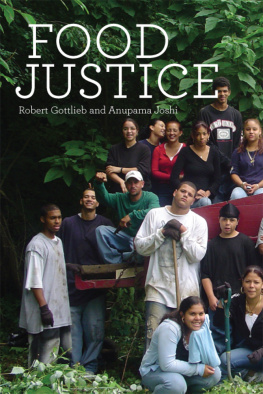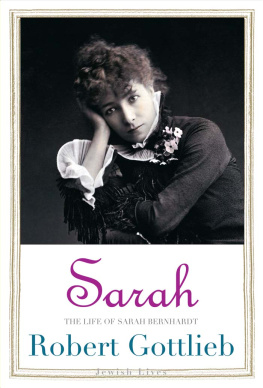The University of Chicago Press, Chicago 60637
The University of Chicago Press, Ltd., London
1992 by Alma Gottlieb
All rights reserved. Originally published 1992 in the series
African Systems of Thought, edited by Charles S. Bird and Ivan Karp,
Indiana University Press.
University of Chicago Press Edition 1997
Printed in the United States of America
03 02 01 00 99 98 97 6 5 4 3 2 1
ISBN-13: 978-0-226-92252-2 (e-book)
Library of Congress Cataloging-in-Publication Data
Gottlieb, Alma.
Under the kapok tree : identity and difference in Beng thought / Alma Gottlieb.
p. cm.
Originally published: Bloomington [Ind.] : Indiana University Press, 1992. (African systems of thought)
Includes bibliographical references and index.
ISBN 0-226-30507-4 (pbk. : alk. paper)
1. Beng (African people)Ethnic identity. 2. Beng (African people)Psychology. 3. Philosophy, Beng. 4. Identity (Psychology)Cte dIvoire. 5. Difference (Psychology)Cte dIvoire. I. Title.
DT545.45.B45G68 1997
| 306.0899634dc20 | 96-26356 |
| CIP |

The paper used in this publication meets the minimum requirements of the American National Standard for Information SciencesPermanence of Paper for Printed Library Materials, ANSI Z39.481984.
UNDER THE KAPOK TREE
Identity and Difference in Beng Thought
Alma Gottlieb
THE UNIVERSITY OF CHICAGO PRESS
Chicago and London
About the Author
Alma Gottlieb is an associate professor of anthropology at the University of Illinois at Urbana-Champaign. Since 1979, her major research has been with the Beng people of Cte dIvoire (West Africa). She is the coauthor (with fiction writer Philip Graham) of the memoir Parallel Worlds: An Anthropologist and a Writer Encounter Africa, which won the Victor Turner Prize for 1993; coeditor (with Thomas Buckley) of Blood Magic: The Anthropology of Menstruation; and coauthor (with M. Lynne Murphy) of a Beng-English dictionary. A contributing editor of the American Anthropologist, Gottlieb has published articles in many edited collections and scholarly journals, including American Ethnologist, American Anthropologist, Man, Anthropology Today, and Africa. Currently she is at work on a new book about Beng infant-rearing practices.
To Philip
devoted husband, friend, and travel companion
and to my Beng family, hosts, hostesses, and friends eci ka kw s
The close relation of identity and difference [is] that which gives us thought.
Martin Heidegger, Identity and Difference
CONTENTS
ONE
The Beng in the World of Ideas
TWO
Of Kapoks and the Earth
THREE
Double Descent as a System of Thought
FOUR
The Marriages of Cousins
FIVE
Hunting Dogs and Laughing Hyenas
SIX
Commodities
FIGURES
MAPS
This book proposes an interpretation of Beng life that is oriented toward two principles that on some occasions appear complementary, on others oppositional. I gloss these principles as identity and difference, following Beng phrases that occur in speech quite regularly. In recent years in the social sciences and humanities, there has been much discussion of the issues that follow these terms. The debates generally revolve around questions of morality: Is it possible to maintain justice in the face of difference? Or is identity the necessary condition for the long-term creation of justice? These questions have become especially pressing in considering the interlinked spheres of race, gender, and class in the modern world.
This ethnography aims to address issues raised by the questions of identity and difference in a rather different arena from the Western orientation of current discourse. It focuses on how one group of people in the West African rain forest have constructed a society and live out their daily lives in relation to an interconnected series of meditations on the notions of identity and difference. In Cte dIvoire, Beng people continually consider, play with, and become entangled in the paired notions of identity and difference. In this study, contradiction becomes a central concept as I explore how these two notions are frequently at logical loggerheads with one another. Through the book, I consider the workings of the two ideas in diverse realms of Beng life and thought, from religious worship to daily life.
The first chapter places the Beng world in the larger world of ideas and theoretical issues. In the second chapter, I discuss Beng Earth worship, which is the cornerstone of traditional Beng religion. The kapok tree is analyzed as a central symbol embodying the fundamental duality of identity and difference. At one level a symbol of difference between village and forest and all that those two domains represent, at another level the tree provides the means to achieve an identity between those realms. Thus the kapok tree confounds the very distinction I will be emphasizing.
concentrates on descent. A first look at the two types of clans reveals a general association of matriclans with the principle of identity and patriclans with difference. But at deeper levels this set of associations does not hold up, and once again the absolute dichotomy is challenged.
this case, the matriclan is ideally endogamous but only to a certain degree: clanmates should marry relatives who are close, but not too close. The entire alliance system indeed hovers unresolvedly between a sociological understanding of proximity and distance.
In , I return more explicitly to issues deriving from cosmology by focusing on myth and ritual. Specifically, I turn to several levels of attitudes and daily practices concerning dogs and hyenas. Here Beng thought is seen as dealing with the themes of identity and difference in a variety of complex ways, posing dogs as beings that lie somewhere between allies and traitors to the human cause and hyenas as beings embodying the notion of the Othera notion that is alternately amusing and terrifying. Thus this chapter explores the ambiguity of that which lies between identity and difference.
looks at how Beng cosmology has confronted material stimuli from the West. I highlight both the ambivalent reactions that the Beng have had to imported commodities and technology and the ambivalent meanings that these foreign goods have come to embody. Identity and difference here speak to the very construction of ethnicity as envisioned by the Beng.
In short, the current work may be taken as a reading of Beng culture. Another outside observerfor example, one with a more explicitly political or economic orientationwould have written a radically different book. And of course, Beng people themselves naturally have their own understandings of their society. While the sort of anthropology that I practice relies heavily on indigenous statements and attitudes, ultimately it is my own interpretations that I offer in this work.
These interpretations are based on sixteen months of fieldwork among the Beng (fourteen months living in one village in 197980 and two months living in another village in 1985) and on regular correspondence with several Beng friends while I have been in the United States. A few brief words here should help to position my field situation and enable the reader to better judge this work.
Thinking back on my immersion in Beng lives, it is hard to imagine myself as the detached observer posited by a previous rhetorical age in anthropology. As Rosaldo puts it (1989: 169), there is no Archimedean point to which the fieldworker can revert. While in the field, I continually tried on a series of identities, each of which on given days felt more comfortable than the previous one both to me and to my hosts and hostesses. Some days I shucked corn, drank palm wine, and danced at all-night funeral dances; other days I treated infected cuts, wrote letters home, and typed up field notes. More to the point, my relationships with my Beng neighbors oscillated constantly between exclusion and inclusion; even concerning the latter, it was rarely predictable whether my inclusion in particular events would be in the role of fictive equal, addressed as Amwe (my Beng name) and asked to wail for the dead or to hold the crying baby, or as high-prestige guest, addressed as White Person

 The paper used in this publication meets the minimum requirements of the American National Standard for Information SciencesPermanence of Paper for Printed Library Materials, ANSI Z39.481984.
The paper used in this publication meets the minimum requirements of the American National Standard for Information SciencesPermanence of Paper for Printed Library Materials, ANSI Z39.481984.







